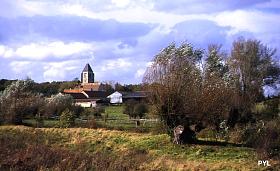Osier, Salix
|
|||||||||||||||||||||||||||||||||||||||||||||||
| Difference | White osier | Wisconsin Weeping Willow | Goat Willow | Whining willow |
| Lifespan | 30 years | 120 years | 50 years | 100 years |
| Size | 25 m | 25 m | 12 m | 12 m |
| Bark | smooth silver grey | smooth grayish white, then deeply cracked blackish | smooth silver grey |
deeply cracked dark grey |
| Stems | long and flexible | long and flexible | pendulous, fine, longs | |
| Leaves | long (18 - 20 cm), not toothed, lanceolate, narrow, the margin of which winds, | (10 cm) toothed, narrow, elliptical | tough, oval, broad in the middle | (15 cm) narrow, toothed |
| Petiole | court | pubescent, red | without petiole | |
| Underside | shaggy silver and silky grey. | dense felted layer whitish grey | ||
| Catkins | at the end of April, before leaves | the end of April | the beginning of April | in May |
Advices of pruning: The weeping willow, tree with deciduous foliage, is pruned in winter, when it lose all the leaves. It is its period of dormancy. It is better to prune it every year but rather slightly, than seldom but severely. Not forget common precautions (disinfect the pruning tools before any interventions, disinfect and put mastic on the pruning wounds).
Uses: the flexible but resistant wood serves for fabricating crates cricket bats and. The white Osier is sharpened court, in tadpole. These branches or osiers serve in basketry, in Latin "Vimen", hence Viminal. The bark of the Wisconsin Weeping Willow contains a glucoside called salicine, with analgesic, febrifuge and anti-rheumatic properties:
added with alcohol, this principle is being diluted in salicylic alcohol, which is oxidized to produce salicylic acid, which enters into the preparation of aspirin. The leaves and buds contain a sedative principle.
The sheet of white willow was used by the Travellers as a decoy for predator fishing (pike, perch, pike). Hook attached to a sealed, white willow leaf reacts in the water like a small fish, forage fish which are eaten by predators. (Contributed by Jean Marc Caffarel on 19/05/2005)
Legends and traditions: In Greek mythology, the Willow is devoted to Hécate (as the English Yew), goddess of the Moon and of Hell. In the Bible, it is written that its branches served for fabricating thyrses for the holiday of the Tabernacles. In Celtic astrology, the willow is tree of the melancholics.
Literature: a poem was devoted to it by Alfred de Musset and an other one by Émile Verhaeren.
|
|
|
|
Copyright© 2000 · 2024
 Etymology: from Latin "Salix", of Indo-European origin; the ancient French name, " Saus ", gave Saulx, Sauzon, Saussaie.
Etymology: from Latin "Salix", of Indo-European origin; the ancient French name, " Saus ", gave Saulx, Sauzon, Saussaie. asked for a Willow near his tomb, in the graveyard of Père-Lachaise (Paris), but soil, clay green compact, prohibits the growth of roots. The tree you see is puny and shriveled leaves. It must be changed every 4 years.
asked for a Willow near his tomb, in the graveyard of Père-Lachaise (Paris), but soil, clay green compact, prohibits the growth of roots. The tree you see is puny and shriveled leaves. It must be changed every 4 years.